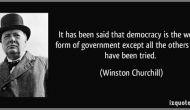In 1873 Congress passed An Act for the Suppression of Trade in and Circulation of Obscene Literature and Articles of Immoral Use, better known as the Comstock Act, named after its chief lobbyist. The legislation, which outlawed the dissemination of information on any form of birth control, reflected growing worries about increases in pre-marital and extra-marital sex and the changing status of women, more and more of whom were entering the workforce and challenging their role as exclusively wives and mothers. Moreover, as mentioned above, middle class, white women were just not producing enough “true American” babies.
For the next hundred years or so, abortion remained illegal despite the efforts of birth control advocates like Margaret Sanger, a tireless crusader for women’s health issues from the 1920s until her death in 1966. The sixth of eleven children born to a mother who went through eighteen pregnancies and died at the age of fifty, Sanger founded the Birth Control League in 1921 to distribute information (illegally) on contraception to doctors and social workers, but also to mostly poor women who had no choice about carrying through unwanted pregnancies forced on them by their husbands’ sexual demands. Even the courageous Sanger had her shadow motives: She was sympathetic to the eugenic movement’s efforts to prevent the wrong kinds of women – immigrants, blacks, and the poor – from diluting the Anglo-Saxon population dominance.
Birth control and abortion issues were not the priority of early twentieth century feminists. Obtaining the right to vote dominated their agenda, while the Great Depression and WWII led them to focus on economic matters, including jobs lost after the “boys” returned home. The big call to legalize abortion came from the feminist movements of the 1960s as one item on a lengthy to-do list. The right of women to control their own bodies is best seen as part of an ongoing, broader agenda of economic and legal equality. Their efforts influenced the landmark 1973 decision in Roe v Wade whereby the Supreme Court allowed unrestricted abortions in the first trimester. (Only as recently as 1965 had it struck down state laws prohibiting married couples from practicing birth control, and in 1972, afforded the same freedom to unmarried couples.)
Opponents of Roe v. Wade saw it as the final blow in a series of attacks against the familiar way of life in which women played their roles as wives and mothers, and shunned divorce, promiscuity, and non-traditional family structures. A common response when one’s belief system is threatened is not to rethink the belief system but to defend it more and more vigorously.
In the 2011 Republican presidential debates, the candidates emphasized their “pro-life” credentials, and nearly all of them pledged to cut off funding for Planned Parenthood, the nation’s largest abortion provider (despite the fact that 97% of its budget goes to providing general healthcare services for its often poor clients). One of them went as far as to condemn the practice of contraception as a “license to do things in a sexual realm that is counter to how things are supposed to be.”
The Republicans lost the election of 2012 largely because women voters rejected the hard line they took on women’s rights, especially on abortion, including requiring mandatory invasive ultrasound examinations for those choosing to terminate a pregnancy. Given the tendency of factors other than legal and moral arguments to determine America’s stand on abortion, we can predict that politicians running for office in 2016, including those on the right, will be heeding instead the subtler beat of women marching toward the voting booths.
If you enjoyed this piece you may also enjoy What on Earth Were They Thinking? The Framers and The Second Amendment.
To buy Harvey’s new book, click on the link below.
Harvey Asher
After receiving his doctorate from Indiana University, Harvey Asher taught a variety of courses in history and interdisciplinary studies for thirty-five years at Drury University, a liberal arts school in Springfield, Missouri. His articles on themes in Russian history, American history, and the Holocaust have appeared in the Russian Review, Kritika, the Journal of Genocide Research, the Russian Dictionary, the SHARF Newsletter, Federalism in America: An Encyclopedia, and Lessons and Legacies of the Holocaust. He is also the author of The Drury Story Continues, an informal but thorough history of the school.
Pages: 1 2





![Sunset - Pelham Shore Park - Long Island Sound [PHOTOS]](https://sheamagazine.com/wp-content/plugins/special-recent-posts-pro/cache/MjAwMTAwbm9JTUdfMzM3MC1SRVNJWkU=.jpg)


![Let's Go to the Empire State Building - Shall We? [PHOTOS]](https://sheamagazine.com/wp-content/plugins/special-recent-posts-pro/cache/MjAwMTAwbm9JTUdfMzkxNjE=.jpg)

![Let's Go to Chinatown, Shall We? [PHOTOS]](https://sheamagazine.com/wp-content/plugins/special-recent-posts-pro/cache/MjAwMTAwbm9jaGluYXRvd24tMi1idy0=.jpg)

![Scenes from Washington Square Park - NYC [PHOTOS]](https://sheamagazine.com/wp-content/plugins/special-recent-posts-pro/cache/MjAwMTAwbm9JTUdfNDA1Mg==.jpg)





